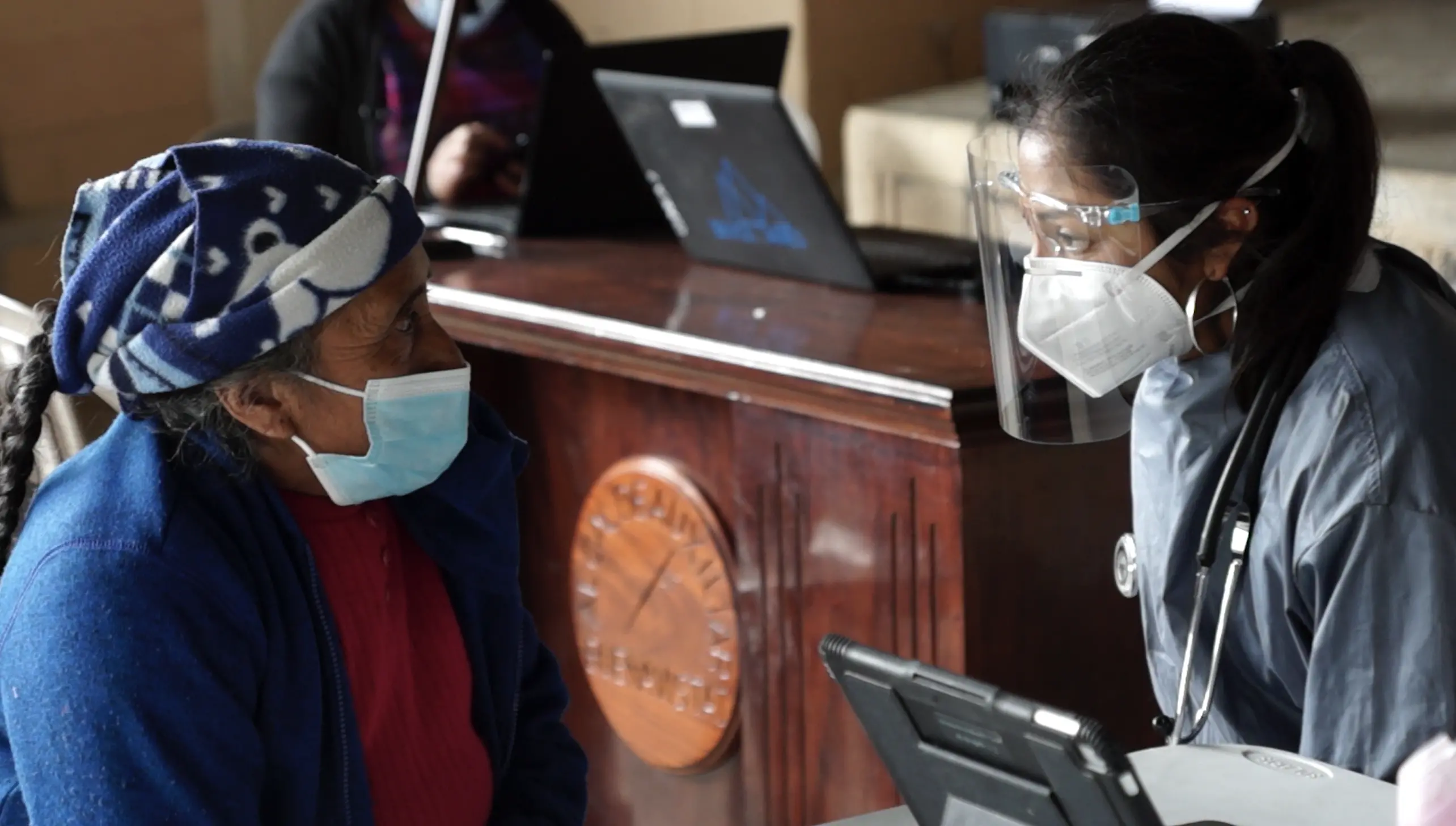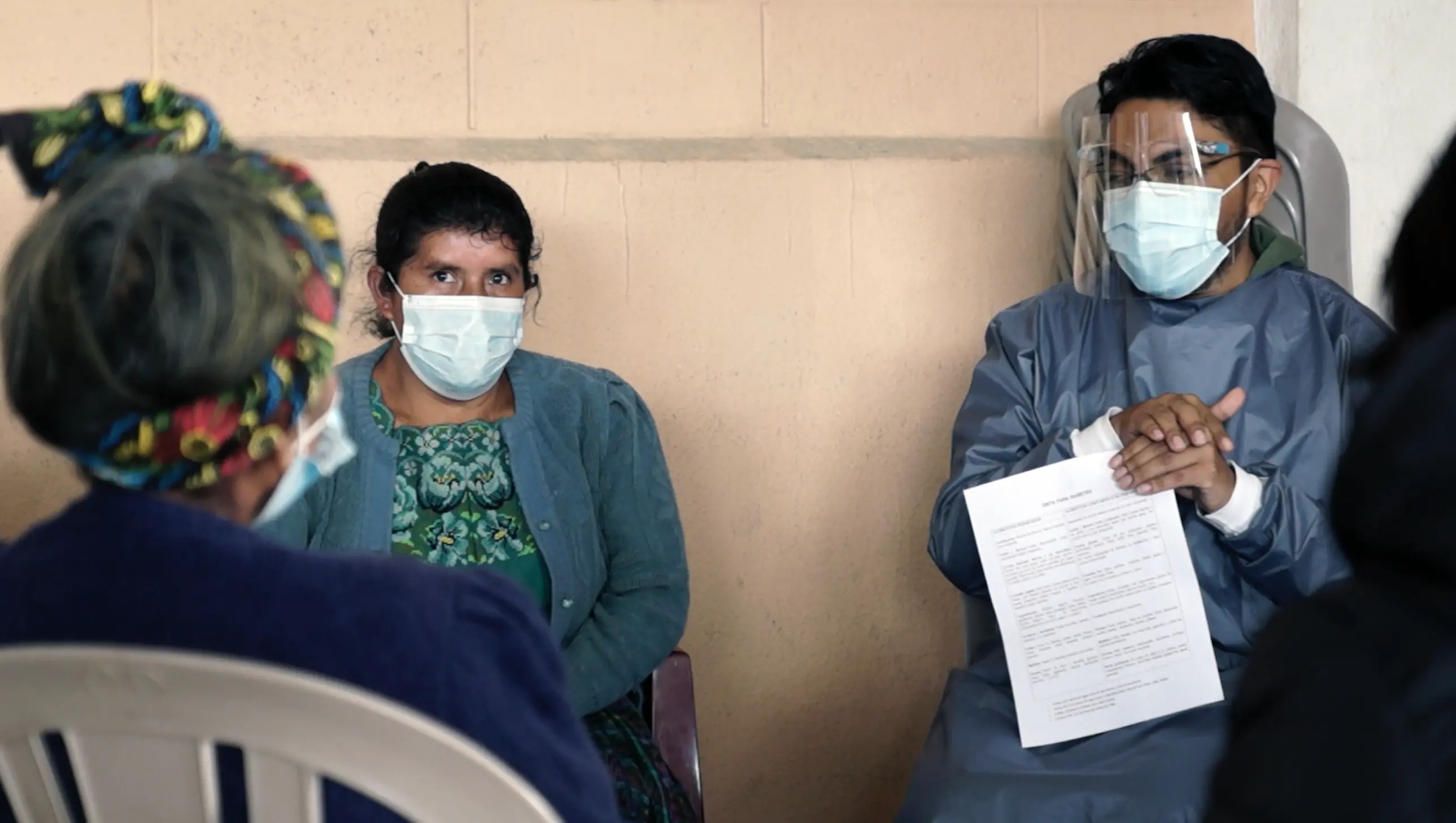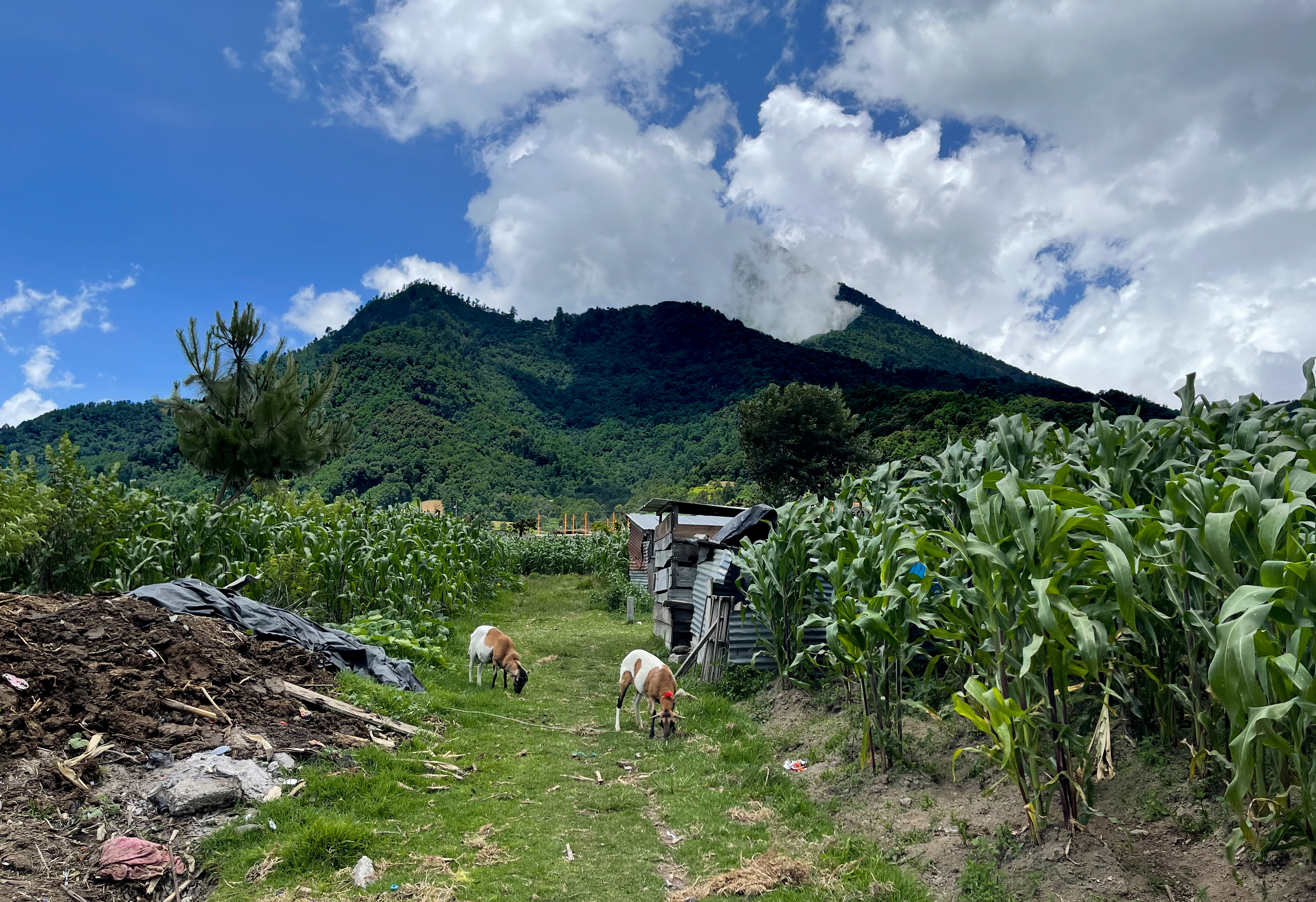Editor's Note: An earlier version of this Field Note was published on November 9, 2021. This Field Note has been edited and republished in ReVista: Harvard Review of Latin America.
Three weeks into filming a documentary in Guatemala about migration, and I am tired. But I wanted—if it were clear enough—to film the sunrise so I stayed overnight at the headquarters of 32 Volcanes, a non-profit organization focused on sustainable health, education and social development programs in the country’s western highlands.
I woke up just after 5 a.m. and filmed the sunrise over the murals of the courtyard that doubles as a parking lot. The Guatemalan dawn is breathtaking with the niebla [mist] coming off the mountains. It’s haunting.
Then I hurry to get ready to leave for the field with Carmen Rosa Benítez and a handful of other clinic staff.
Benítez, one of the daughters of the founders of 32 Volcanes, is a doctor who runs much of the day-to-day operations. We are going to a pueblo called San Juan Ostuncalco in the municipality of Quetzaltenango where they will operate a day clinic in the neighborhood of Aldea Buena Vista for those who are tercera edad [elderly], and mostly from the Mam community.

The Spanish named Quetzaltenango after the invasion and subsequent conquest of the area in 1524. In day-to-day conversation, you will hear people refer to the city as Xela. The word Xela comes from the Mam language and is short for Xelajú, derived from the words xe laju’ noj, which translate to “under 10 mountains,” although no’j can also mean wisdom.
This mix of Mayan and Spanish culture is everywhere, from the crumbling historic Catholic churches and old Spanish-style buildings around the Parque Centro América in Xela to the informal mercados filled with vendors of fruits and vegetables, clothing and other goods. Most vendors wear traditional Indigenous dress from the K’iche or Mam communities.
It’s now the evening of July 29, 2021. A staff member of 32 Volcanes sends me a message that I should not venture out into the city. His message—residents are starting to gather around the city’s municipal building to protest the federal government and the president. Five days earlier, the lead governmental anti-corruption prosecutor Juan Francisco Sandoval fled Guatemala in the middle of the night for his safety after being removed from his position by the country’s attorney general. People were already a bit on edge because weeks before that, on July 10, three days before I arrived in Guatemala, a prominent activist and independent journalist, Frank Stalyn Ramazzini, was killed in Guatemala City. You could feel the tension, frustration and hope.
The building that houses 32 Volcanes is a two-story structure located in Zone 1 of Quetzaltenango, just a couple streets south of the Parque Centro América where the office of el alcalde [the mayor] of Quetzaltenango is located. The front door is large black matte metal with the organization’s logo at the top. As you enter the courtyard, there are buckets, pots and wooden crates with plants and two murals. The first mural you see is the logo of 32 Volcanes, and the second one is painted by one of the women beneficiaries of 32 Volcanes named Fabiola Pérez, who takes care of the building, along with her daughter Jocelyn.
A colonnade wraps around the inside of the building in an L-shape. There’s a clinic, library, bookstore and kitchen. The organization is trying to tackle many underlying problems that lead to migration, including by providing health clinics. That is what they are doing today.
Carmen Rosa, Iris Romero, Veronica Istazuy, Escarleth Pérez, Omar Cordova, Gabriela Istazuy and Yolanda López pack the van, and we head out at 9:00 AM for San Juan Ostuncalco. Everyone is exhausted. The team has been working nonstop for the two weeks I’ve been here. It isn’t just the clinic; others are preparing to restart a variety of education classes, and still others are preparing for two reforestation projects. For a small operation, they cover a lot of ground. But for Benítez, the holistic approach is the only approach possible.
As we leave Xela, the elevation rises and the community setting gives way to dispersed, long tracts of land dotted with clusters of houses and a business or two along the road, while the mountains rise up behind.
Two scenes quickly become noticeable. The first is partially constructed houses. They are all gray, one or two stories with rebar and concrete coming out at the top. These houses, though unfinished, are a sign of the wealth a family accumulates mostly through remittances from relatives who have migrated to the United States. Not every house or family is so lucky. Sometimes the money dries up, and the house is abandoned—leaving a mosaic of gray and green dotting the landscape between towns.
The second is the number of Evangelical Christian churches. The buildings are unassuming, and are easily mistaken for what a community center might look like. This faith is rapidly on the rise. The Catholic church is still present, so are its buildings. The shift, however, is noticeable. Yet, the church goers coming in and out still wear their traditional indigenous garb.
We pull into a two-spot parking space in front of a small clinic attached to a one-room meeting hall. Patients are already seated in a semi-circle inside the hall. Although it is only 10 a.m., the sun feels directly overhead. It’s hot, dry and dusty. María Luisa López Gómez, Mam Indigenous scholarship beneficiary of 32 Volcanes, translates between Spanish and Mam for the clinic.

López Gómez’s eldest daughter migrated to the United States about two weeks ago. Everyone understands the desperation that a 16-year-old can feel living in financially and socially uncertain conditions. I greet López Gómez, and she smiles warmly back. She has an intensity in her eyes, resilience created through the hardships she has endured and overcome. She is one among many mothers who have seen their children become so overwhelmed with desperation at the disparity of wealth in Guatemala, mesmerized by the view of life in the United States, that they make the treacherous journey North.
As I film the set-up of the clinic and stand at the back of the room next to the entrance, I watch as the clinic staff wastes no time. Like clockwork, four stations are set up and the patients move through the line.
During a lull in the line, I ask Benítez to explain what’s happening. She says that they have “had some problems with the Ministry of Health allowing us to do all of our activities.” More rules were put in place and to host the clinic, they have to meet all the requirements.
For Benítez, some of the requirements were understandable. When the ministry halted their in-person activities it was because there had been outbreaks of the coronavirus. So, 32 Volcanes abided by the requirements to use PPE and meet in small groups or online. As time went on, they were not allowed to offer their training, even in small groups. The ministry restricted their activities to such a degree that according to Benítez the requirements were now deleterious to the Indigenous community—in particular the mothers and their young children and the elderly.
Most of the clients do not make or have enough money to pay for continuous internet. Their main means of communication is WhatsApp. For months, mothers, some first time mothers, did not have access to essential educational, holistic and nutrition training. The majority of the elderly patients have hypertension and uncontrolled diabetes.
Now, it is just over a year since those requirements were put in place. There is still a strange sense of oversight. Benítez and her staff “are very controlled” by the government-run health center located in a building next to where 32 Volcanes holds its clinic. This presents logistical barriers that 32 Volcanes has to overcome to provide holistic care for the chronically ill patients of this vecindario [neighborhood] despite being already understaffed and underfunded. They don’t just provide medicine or medicinal care for these elderly patients with chronic illnesses.
“The chronic patient program is based, also, in food sovereignty,” Benítez says. “We didn’t have the funding to keep doing workshops, to keep doing medical care, nutrition, in a holistic way. And as we couldn’t follow all the terms and requirements of the ministry then we needed to stop for at least one year. This is the first time we are coming back after a year.” She continues to explain that they are not only monitoring their vitals, but they are also concerned about their emotional and psychological status, especially the effects of the pandemic.
As part of the holistic care that 32 Volcanes provides, the chronic patient program also teaches gardening classes connected to nutrition and qigong meditation, and offers collective group therapy for the psychological health of the elderly patients.
The clinic starts to wrap up by the late afternoon. As swiftly as Benítez and team set up the clinic, it is taken down and loaded back into the van. Tomorrow I will get up again at sunrise and travel to another town on the outskirts of Quetzaltenango to film—this time looking for evidence of climate change on the soil and crops.
- View this story on Field Notes












